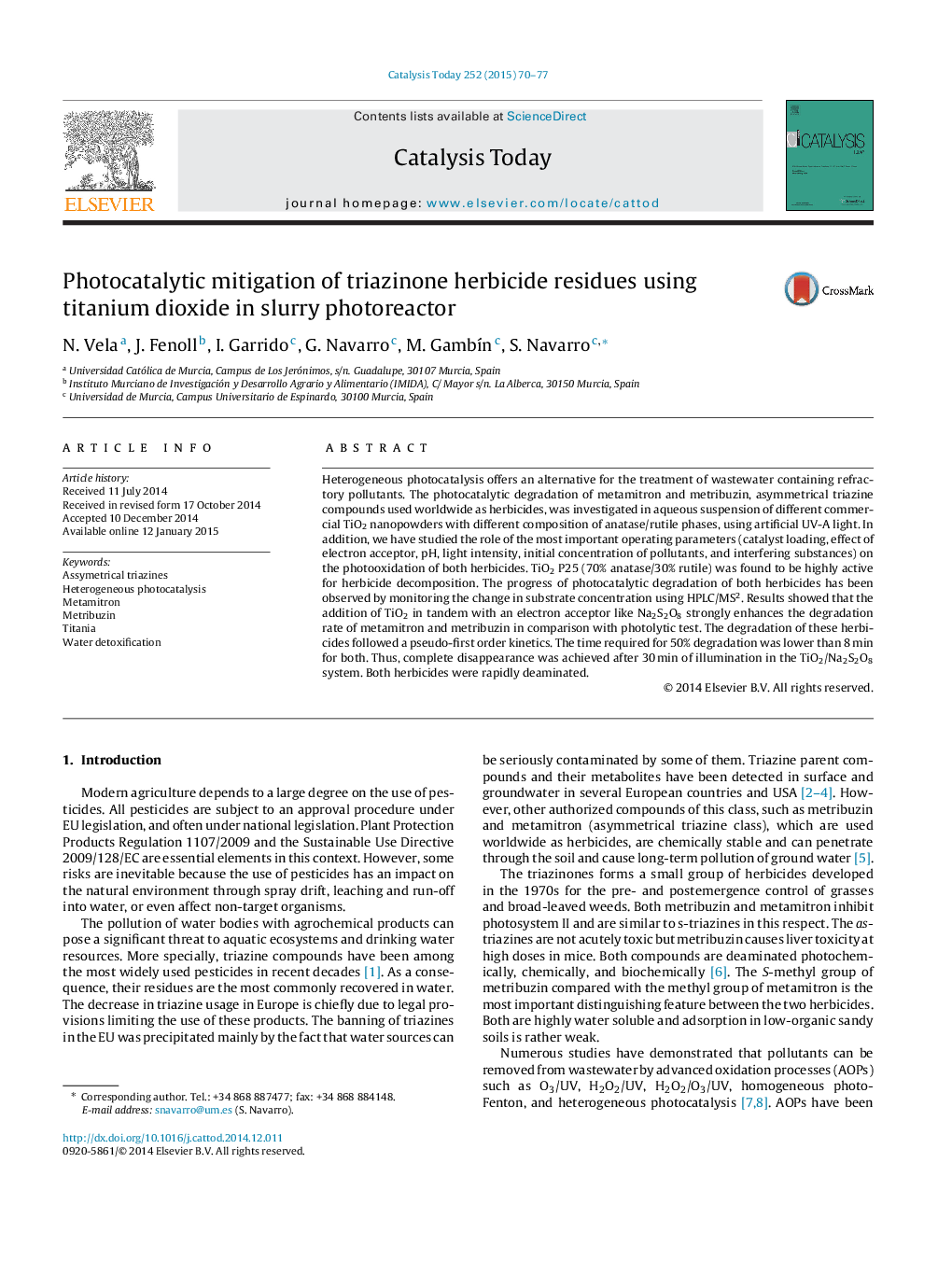| کد مقاله | کد نشریه | سال انتشار | مقاله انگلیسی | نسخه تمام متن |
|---|---|---|---|---|
| 53852 | 46987 | 2015 | 8 صفحه PDF | دانلود رایگان |
• Photocatalytic oxidation of metamitron and metribuzin herbicides in water was studied.
• The study was performed using different commercial TiO2 nanopowders under artificial irradiation.
• The role of important operating parameters on the photooxidation of both herbicides was studied.
• Triazinone herbicides were totally degraded using TiO2 P25 in tandem with Na2S2O8 after 30 min of illumination.
• Both herbicides were rapidly deaminated.
Heterogeneous photocatalysis offers an alternative for the treatment of wastewater containing refractory pollutants. The photocatalytic degradation of metamitron and metribuzin, asymmetrical triazine compounds used worldwide as herbicides, was investigated in aqueous suspension of different commercial TiO2 nanopowders with different composition of anatase/rutile phases, using artificial UV-A light. In addition, we have studied the role of the most important operating parameters (catalyst loading, effect of electron acceptor, pH, light intensity, initial concentration of pollutants, and interfering substances) on the photooxidation of both herbicides. TiO2 P25 (70% anatase/30% rutile) was found to be highly active for herbicide decomposition. The progress of photocatalytic degradation of both herbicides has been observed by monitoring the change in substrate concentration using HPLC/MS2. Results showed that the addition of TiO2 in tandem with an electron acceptor like Na2S2O8 strongly enhances the degradation rate of metamitron and metribuzin in comparison with photolytic test. The degradation of these herbicides followed a pseudo-first order kinetics. The time required for 50% degradation was lower than 8 min for both. Thus, complete disappearance was achieved after 30 min of illumination in the TiO2/Na2S2O8 system. Both herbicides were rapidly deaminated.
Figure optionsDownload high-quality image (139 K)Download as PowerPoint slide
Journal: Catalysis Today - Volume 252, 1 September 2015, Pages 70–77
